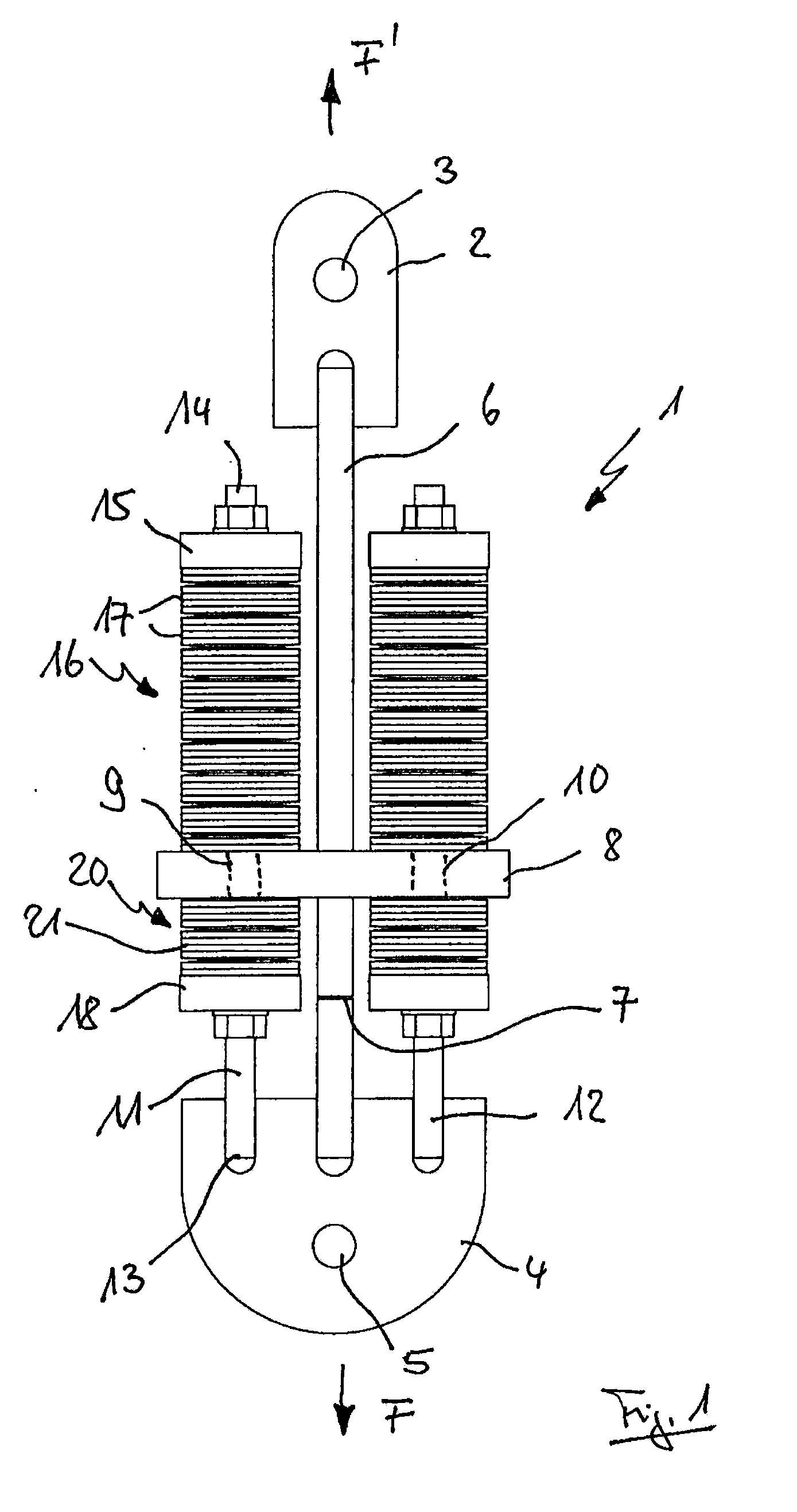Cable End Anchorage With Overload Protection
a technology of overload protection and cable end, which is applied in the direction of cables for vehicles/pulleys, structural elements, building components, etc., can solve the problems of increased construction cost and high construction complexity, and achieve the effect of reliably decoupling the supporting structure from the maximum load and high degree of inherent rigidity and resistan
- Summary
- Abstract
- Description
- Claims
- Application Information
AI Technical Summary
Benefits of technology
Problems solved by technology
Method used
Image
Examples
Embodiment Construction
[0031]FIG. 1 illustrates a first exemplary embodiment of an inventive cable end anchorage 1. The cable end anchorage here features a first connecting element 2 in the form of a fastening plate. The fastening plate is equipped with a recess 3 for penetration of a fastening bolt (not shown) for fastening at a supporting structure (not shown). Moreover, the cable end anchorage features a second connecting element 4 equally in the form of a fastening plate with a recess 5 functionally corresponding to the recess 3. Via the recess, the end of a steel cable equipped with a corresponding fitting can be coupled with the aid of a stud bolt or the like.
[0032]The two connecting elements 2 and 4 are connected with one another in a force-transmitting manner via a bar-shaped coupling element 6, i.e. firstly in a substantially rigid fashion. When a tensile force is exerted in the direction of arrow F, in this process, the load applied at the cable is transmitted to the supporting structure.
[0033]T...
PUM
 Login to View More
Login to View More Abstract
Description
Claims
Application Information
 Login to View More
Login to View More - R&D
- Intellectual Property
- Life Sciences
- Materials
- Tech Scout
- Unparalleled Data Quality
- Higher Quality Content
- 60% Fewer Hallucinations
Browse by: Latest US Patents, China's latest patents, Technical Efficacy Thesaurus, Application Domain, Technology Topic, Popular Technical Reports.
© 2025 PatSnap. All rights reserved.Legal|Privacy policy|Modern Slavery Act Transparency Statement|Sitemap|About US| Contact US: help@patsnap.com



